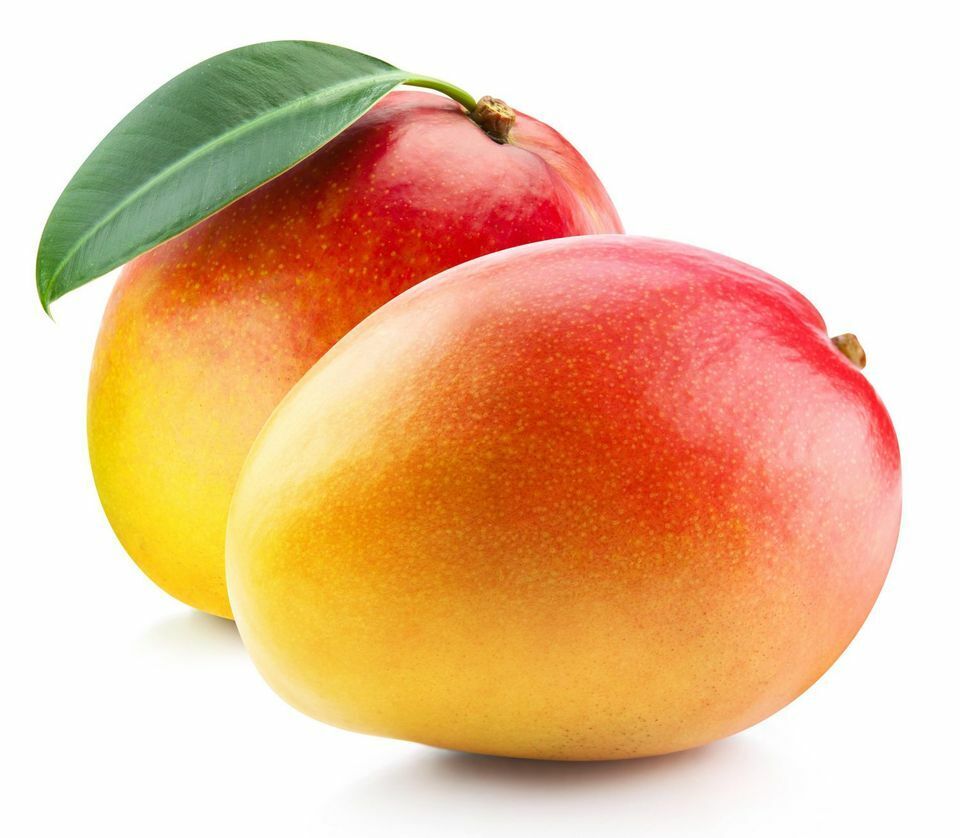Haden

The 'Haden' mango, often referred to as 'Hayden,' is one of the most iconic and historically significant mango cultivars. Introduced in the early 20th century in South Florida, it quickly gained global recognition for its exceptional qualities and became a cornerstone for mango cultivation worldwide. This cultivar's success led to the development of many other popular mango varieties, solidifying its place in mango history.
Renowned for its rich, aromatic flavor, the 'Haden' mango features a stunning appearance, with a deep red blush complemented by green and golden-yellow undertones. Its flesh is firm yet juicy, with a slight
Fibrous texture that adds to its character. When ripe, it delivers a sweet, tropical taste with hints of floral and spicy notes, making it a favorite among mango enthusiasts.
The 'Haden' mango tree is vigorous and highly productive, producing medium-to-large, oval-shaped fruits that are as beautiful as they are delicious. Its legacy continues to influence modern mango breeding programs, as its genetic traits are valued for their flavor, color, and adaptability. Whether enjoyed fresh, in desserts, or as part of tropical recipes, the 'Haden' mango remains a timeless classic in the world of fruit.
In 1902, Captain John J. Haden, a retired U.S. army officer living in Coconut Grove, Florida, planted four dozen seedlings of Mulgoba mangoes he had purchased from Professor Elbridge Gale in Mangonia, near Lake Worth Lagoon in the area of present-day West Palm Beach. Haden would die the following year, but his wife Florence cared for the trees at their property in Coconut Grove, which first fruited in 1910. One tree in particular produced superior quality fruit, with brilliant color and good flavor. This cultivar was selected and given the family name. Both historical and pedigree analysis indicates that Haden was likely the result of a cross between Mulgova (misspelled as
Mulgoba, cultivar origin in Tamil Nadu, India) and a Turpentine mango.
Florence Haden, realizing the potential of the cultivar, reported its success to the Florida State Horticultural Society, and sent two specimens of the fruit to the
United States Department of Agriculture, and another larger mango to Edward Simmonds of the
Plant Introduction Station at Miami. Simmonds was immediately intrigued and eventually took up propagating the Haden in south Florida. Haden became a big commercial success, largely due to its large-scale propagation by nursery-owner George Cellon, and would dominate the mango industry in the state for roughly 25 years, as well as being introduced to other locations with great success, such as Honduras, Hawaii and Australia. Haden gradually fell out of favor as a commercial mango largely due to fungus problems, along with inconsistent production, problems with internal breakdown of the fruit (also known as jelly seed), and the availability of new varieties with superior characteristics. Most of the mango varieties subsequently developed in Florida were either direct or indirect descendants of Haden.
Despite falling out of favor as a commercial production mango, Haden remained one of the most widely propagated mangoes for nursery stock and home growing throughout the decades, and continues to be today.
Haden trees are planted in the collections of the
USDA 's germplasm repository in Miami, Florida, the University of Florida's Tropical Research and Education Center in Homestead, Florida, and the Miami-Dade Fruit and Spice Park, also in Homestead. The original tree still stands in Coconut Grove.
Haden - Rich in flavour and aromatic, Red colour with green and yellowish overtone, texture should be firm flesh due to fibres


 The 'Haden' mango, often referred to as 'Hayden,' is one of the most iconic and historically significant mango cultivars. Introduced in the early 20th century in South Florida, it quickly gained global recognition for its exceptional qualities and became a cornerstone for mango cultivation worldwide. This cultivar's success led to the development of many other popular mango varieties, solidifying its place in mango history.
Renowned for its rich, aromatic flavor, the 'Haden' mango features a stunning appearance, with a deep red blush complemented by green and golden-yellow undertones. Its flesh is firm yet juicy, with a slight Fibrous texture that adds to its character. When ripe, it delivers a sweet, tropical taste with hints of floral and spicy notes, making it a favorite among mango enthusiasts.
The 'Haden' mango tree is vigorous and highly productive, producing medium-to-large, oval-shaped fruits that are as beautiful as they are delicious. Its legacy continues to influence modern mango breeding programs, as its genetic traits are valued for their flavor, color, and adaptability. Whether enjoyed fresh, in desserts, or as part of tropical recipes, the 'Haden' mango remains a timeless classic in the world of fruit.
The 'Haden' mango, often referred to as 'Hayden,' is one of the most iconic and historically significant mango cultivars. Introduced in the early 20th century in South Florida, it quickly gained global recognition for its exceptional qualities and became a cornerstone for mango cultivation worldwide. This cultivar's success led to the development of many other popular mango varieties, solidifying its place in mango history.
Renowned for its rich, aromatic flavor, the 'Haden' mango features a stunning appearance, with a deep red blush complemented by green and golden-yellow undertones. Its flesh is firm yet juicy, with a slight Fibrous texture that adds to its character. When ripe, it delivers a sweet, tropical taste with hints of floral and spicy notes, making it a favorite among mango enthusiasts.
The 'Haden' mango tree is vigorous and highly productive, producing medium-to-large, oval-shaped fruits that are as beautiful as they are delicious. Its legacy continues to influence modern mango breeding programs, as its genetic traits are valued for their flavor, color, and adaptability. Whether enjoyed fresh, in desserts, or as part of tropical recipes, the 'Haden' mango remains a timeless classic in the world of fruit.






